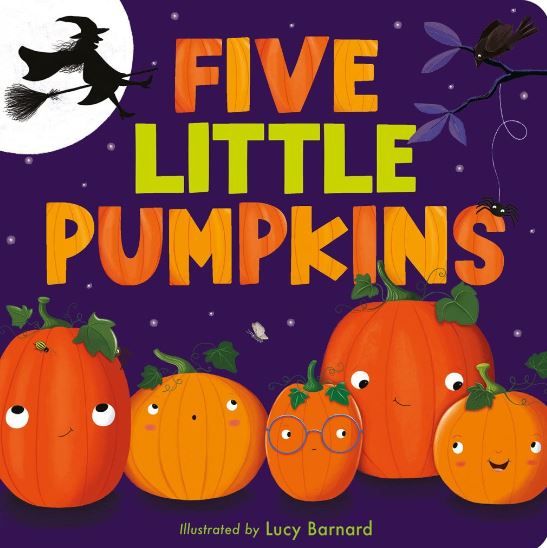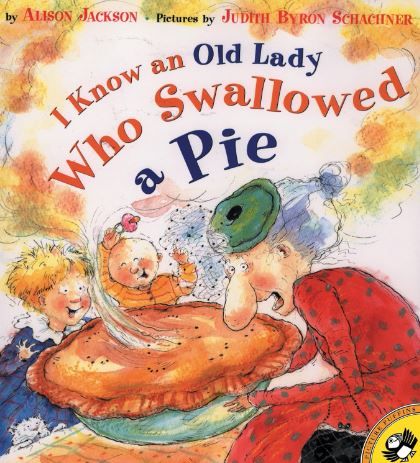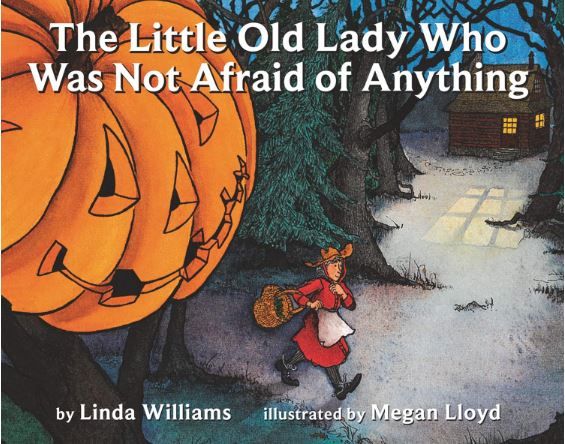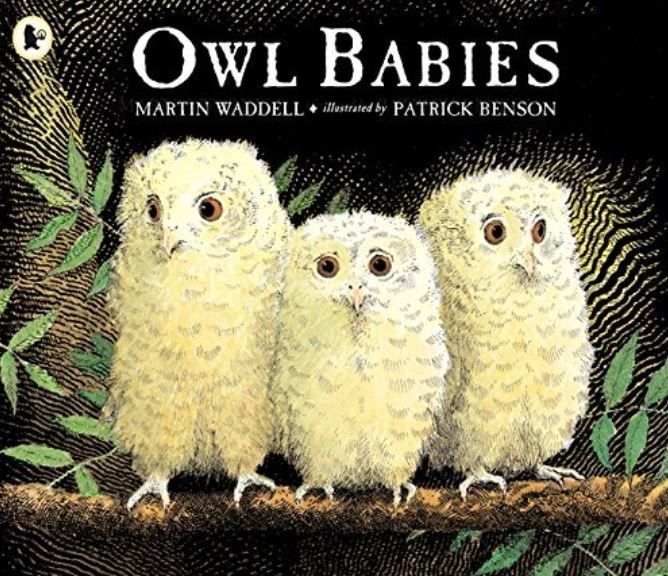Read time: 7 minutes
Wait a second.
Fall is here. Like really here. Where did the time go?
The gorgeous colors, the pumpkins, the crisp air, putting on PJs the second it gets dark and finding your fifth shrine for the night in The Legend of Zelda, Tears of the Kingdom...
No?
Alright, maaaaybe that's just my version of fall.
But really, what more could you possibly ask for?
How about four fall books for the auditory hierarchy?
Yes, perhaps you didn't exactly ask for that, but here it is to help you on your journey of providing rich listening and literacy experiences for all ages!
So without further ado....

Stage One: Detection
Book: Five Little Pumpkins, By Tiger Tales, Illustrated by Lucy Barnard.
Strategy: Acoustic Highlighting
Age Demographic: Birth to four
Extension Activity: Orange ball/toy pumpkin to roll up/down and highlight suprasegmentals (I.e. duration, pitch, volume of speech), modeling early exclamatory remarks, (I.e. Uh oh! Oh no!).
Dr. Norman Erber developed the "Auditory Hierarchy" in the early 1900s, which helps professionals and parents pinpoint their child's current auditory skill level. Detection is when a child shows awareness of sound, but does not yet understand its meaning.
Back to the Five Little Pumpkins.
This book is so fun! Even when I read it to my own children, I love the opportunities for repetition, rhyming, and introducing new vocabulary. In particular, this book really lends itself to utilizing acoustic highlighting to promote the detection of sound.
What exactly is acoustic highlighting? Acoustic highlighting is finding sounds, words, and phrases to emphasize or highlight. This type of speech encourages the brain to "tune in" to important auditory information.
In human speech, there are words and phrases that we stress to highlight a certain point. Think of the phrase, "She needs directions for cooking." Try emphasizing a different word each time. The meaning changes, doesn't it? Beyond individual words, acoustic highlighting draws a listener to the importance of language as a whole and the nuances of prosody, pitch, duration, and volume.
When reading Five Little Pumpkins, I personally like to use higher pitch to emphasize the phrase, "Oh my it's getting late!", and a variety of pitches, speeds, and volumes for each pumpkin in the story to engage the listener. The expectation is not immediate understanding at this point, but rather, increase engagement and attention to literary and auditory tasks.
Above all else, remember to keep things fun, especially in the early listening period. If a child seems disinterested in one story, move on to another, but continue to offer stories each and every day.
One will eventually stick!

Stage Two: Discrimination
Book: I Know an Old Lady Who Swallowed a Pie, By Alison Jackson, Illustrated by Jackie SchachnerStrategy: SingingAge demographic: Toddler to ElementaryExtension Activity: Listening for items for an "old lady" to eat (see, me pretending to be an old lady). I like to include early learning to listen sounds like the airplane, cow, baby, and horse even though these items are not in the book. It makes for a great laugh!
So what is discrimination of sounds? Discrimination is when a child is starting to tell that two sounds are different, either by duration or specific consonant or vowel sounds.
Enter our book.
Oh man, I Know an Old Lady Who Swallowed a Pie is fabulous.
I can't help but sing to it even when I'm not even reading it. I'm obsessed with all of the vocabulary that centers around the harvest season: squash, cider, even a ten-layered cake! But what I really love about this book is the repetition it offers in songs and rhymes, which helps to solidify differences in sounds and words and engages early listeners in the discrimination stage.
If I find a student struggling to attend to this story, I'll change up the volume and speed of my singing to make the book more acoustically enticing. Whispering and singing quickly, "That grumbled and mumbled and rumbled inside her'' and raising the volume and singing slowly on "She swallowed the cider to moisten the pie, the Thanksgiving pie that was reeeeally too dry..." is a real crowd pleaser, and helps extend auditory attention to the story.
Win, win in my book.
By the way, have I mentioned that reading should be fun?
Because it should be.
Establishing attention to tasks may seem like it takes a long time, but it is critical to develop a love of reading. I suggest offering a story and showing an interest in it, but not forcing a child to sit and "read" if they don't immediately want to. I've been known to read a children's book aloud in our living room while my son wanders nearby, periodically checking in with me and what I'm reading.
Because I didn't push my active child to sit and read, we managed to create a positive relationship with reading while still exposing him to as many books as possible.
Now? He wants ALL THE BOOKS.
In my lap.
ALL. THE. TIME.
And parents everywhere commiserated.
Kidding.
Now, what if you aren't reading this particular story? Keep singing! Even if the book you are reading doesn't explicitly have songs in it, you can still sing to help those brains attend for longer periods.
The book has stars in it? Sing twinkle twinkle.
Bugs? Time for an operatic version of the Itsy Bitsy Spider.
Vehicles? I'm pretty sure anyone reading this can rap the wheels on the bus better than me. So do it!
Find songs in anything and everything, even if you are a self-acknowledged off-key individual.
Your vocal range...I mean, the sky's the limit.
So sing, sing, sing!

Stage Three: Identification
Book: The Little Old Lady Who Was Not Afraid of Anything, By Linda D. Williams, Illustrated By Megan Lloyd
Strategies: Auditory Sandwich, Expectant look, Auditory closure
Age Demographic: Older toddler to elementary
Extension Activity: Laundry time! Ask for your child to retrieve a variety of clothing items from a larger set or farther distance. If the child doesn't understand, use the auditory sandwich (audition, visual, audition) to promote understanding of your request.
Identification is when an individual is able to identify an item accurately when heard. For example, a child hears an airplane and says, "airplane" or their dog barking and says, "Doggie!" An early listener is beginning to understand simple words and phrases by listening alone.
Let's chat about this page turner, The Little Old Lady Who Was Not Afraid of Anything. I can't help but dance to this book!
"Two pair of pants go shake shake! One pair of pants goes wiggle wiggle." Has a great beat! And the book has a lot of repetition, which is perfect for the identification stage and the strategies I've paired with it!
An expectant look is exactly what it sounds like, an expectant look. You know, the one where a parent wants a child to ask kindly for something but doesn't want to explicitly say that to the child? Let's just say my kids know "that look." Auditory closure is using a familiar phrase and then pausing to allow the child to fill in the space. For example, "Ready, set..."
Go!
In the context of this story, I like to prime my students to listen to the story pattern by reading through a few pages, and then offer the phrase, "Two pair of pants go..." while giving the child an expectant look. Hopefully, the child will attempt an approximation of "Shake Shake!"
Again, keep it fun!
Now, time to practice your expectant look.

Stage Four: Comprehension
Book: Owl Babies, By Martin Waddell, Illustrated by Patrick Benson
Strategies: Expansion and Extension
Age Demographic: Toddler through Elementary
Extension Activity: "Follow my lead", verb style. Model novel verbs for the child in play and use the auditory sandwich technique to create a vocabulary sandwich. For example, "Yes! The owl really likes to fly down fast! Look at how she swoops down! She's flying down fast!"
And this is where things really get fun.
"Well that was precious."
Words spoken by my soft-hearted husband after reading Owl Babies to our children at bedtime. It is a tender story, and yet it offers so many opportunities for rich language.
In the story, three baby owls are left to contemplate their existence while seemingly abandoned by their mother in the dead of night. Whew - pretty deep stuff for a children's book huh?
Exactly.
Each nail biting page is filled with opportunities to introduce novel vocabulary and gut wrenching concepts.
One character, Bill, continuously says, "I want my mommy." When I read this book with children, I like to hypothesize, "It seems like Bill wants his mom. I bet he feels scared, nervous, and apprehensive."
Woah, woah, woah. You say.
Now Laura, can these listeners really comprehend the word apprehensive?
Maybe
Maybe not.
Here's the thing. In this context, we have an opportunity to expose the child to a new vocabulary word in the moment.
Taking advantage of a language opportunity is capitalizing on the saliency of the moment.
Sure, we could randomly introduce the term "apprehensive" and maybe it would stick, but being in the moment, if you will, is an essential tool for solidifying language understanding and use while simultaneously extending its purpose for the listener.
And therein lies the essence of the comprehension stage.
Practically speaking though, what can we do to promote true comprehension of words and phrases? Enter, expansion and extension.
What are the strategies of expansion and extension?
Expansion is recasting a phrase in a grammatically correct way. So, if you are reading Owl Babies and a child says, "Owl sad." about dear little Bill the baby owl, you can recast by saying, "Yes, the owl is very sad."
Extension is recasting a child's phrase as grammatically appropriate, but adding novel information. In the case of Bill, if the child says, "Owl sad.", you can respond by saying, "Yes, Bill is sad because his mom left. He leapt onto the branch to search for her."
The more a child has to talk about, the more they can ask questions about what they want to learn about. The more they learn, the more they want to ask. And so on. Understanding begets Language, which begets deeper understanding, which begets more language.
Keep on raising the bar on language and vocabulary exposure. Bill might even thank you later - I know I will!
References:
1. Therres, M. (2015, October). Auditory development series: Auditory development hierarchy. AudiologyOnline, Article 15458. Retrieved from http://www.audiologyonline.com.
2. Erber, N.P. (1982). Auditory training. Washington DC: AG Bell Association for the Deaf
3. Ling, D. (1989). Foundations of Spoken Language for Hearing-Impaired Children. Washington DC: Alexander Graham Bell Association for the Deaf and Hard of Hearing
© Laura Gillingham

